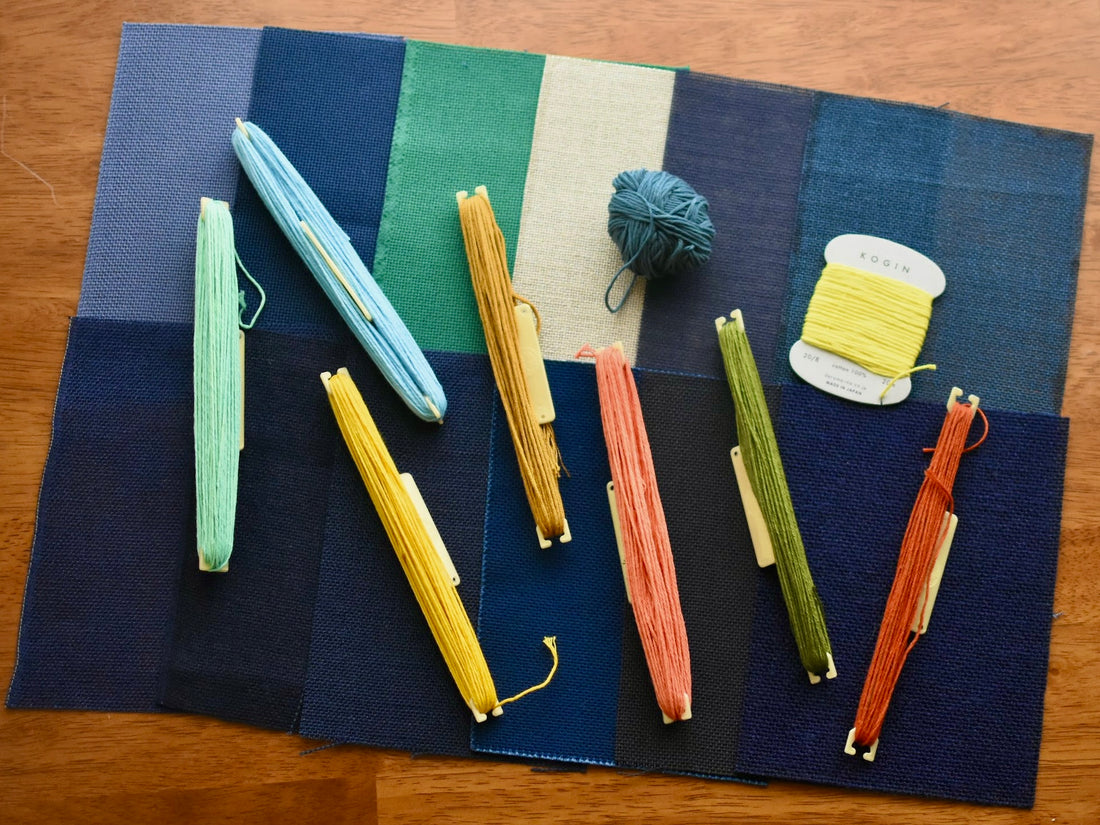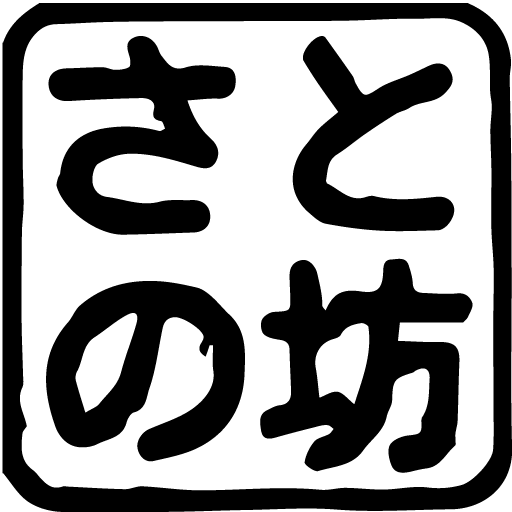
Understanding cloth and thread 3 (weight)
◆Learn about cloth and thread 3
In the previous article, Understanding Cloth and Thread 2 , we introduced words about cloth and the number of stitches per 1cm of cloth. Today I was planning to compare the patterns, but before that, I would like to introduce the weight of the fabrics .
First off, which fabric looks heavy in the photo below? In order to keep the number of weaving threads close to each other, we line up fabrics that have similar counts and are often used for Koginzashi.

(Is there a difference in weight between linen and cotton cloth? Does it depend on the number of stitches?)
◆Knowing the weight of the fabric All fabrics were measured using a household electronic scale that measures 8cm in width and 13cm in height (with an error of about 1 thread) in increments of 1g. Below are the measurement results. How did it compare to your expectations? Is there anything you notice?
The finer the weave of the cloth = the greater the number of threads within the area . Doesn't the weight of the cloth increase in proportion to the number of threads? This may seem simple, but looking at the results, it appears that there are several material factors that affect the weight, such as the type of yarn (linen, cotton, linen/rayon blend) and the thickness of the yarn itself. .

(You can also feel the difference when you hold it in your hand)
◆Comparison of cloth weight and stitch count The photo below shows two pieces of information so that you can also check the relationship between stitch count and weight. Just because it's a fine-grained cloth, it doesn't seem to be heavy. In the first place, in order to create fine-grained cloth, it seems necessary to reduce the thickness of the weaving thread.
What kind of feelings do you have? Cotton seems to be heavier than linen. Even though they are made of the same cotton thread and have almost the same number of stitches, New Congress and Perry Pull weigh 5g, while Koginbank Original Koginfu weighs 8g. When you look closer to the cloth, you can see that the thickness of the threads is different. Even if you just think about it, you'll notice a lot of things! Write down the weight of the same number of stitches below.
⚪︎Horizontal approx. 7 stitches, width approx. 9 stitches/cm
Kogin Duel (hemp) 5g , Hemp 252 (hemp) 5g , Daruma (hemp) 5g
⚪︎Horizontal approx. 7 stitches, width approx. 8 stitches/cm
Perry pull (cotton) 5g , New Congress (cotton) 5g , koginbank kogin cloth (cotton) 8g
⚪︎Horizontal approx. 6 stitches, width approx. 7 stitches/cm
Fancy Hesshan (linen*rayon blend) 8g
⚪︎Approx. 8 stitches/cm (20ct)
Zweigart coke (linen) 7g , Olympus linen (linen) 4g
⚪︎Approx. 7 stitches/cm (18ct)
Kensen Congress (cotton) 10g , Zweigart Davosa (cotton) 7g , Lucian Congress (cotton) 8g

(It seems easier to understand if you put it in a table.)
◆Weber-Fechner's law
Have you ever heard of the Weber-Fechner law ? If you do a search, you'll find many easy-to-understand examples, but one of them is, ``If you add 10g to a 100g weight in your palm, it feels heavier, but if you add 10g to 1000g, it doesn't feel heavier.'' "I don't feel like it's heavy. However, when I add 100g to 1000g, I feel like it's heavier." `` The magnitude of human sensation is proportional to the logarithm of the intensity of the stimulus received .'' Also, it seems that each individual has different criteria for noticing the difference.
◆ Sharpen your senses and taste the ingredients with your hands, eyes, ears, etc.The reason why I talked about this here is that I will probably continue talking about the senses, and the sensory value varies depending on the individual (you can feel the difference) standard values) are different. My level of sensing differences is naturally different from yours. Of course, what's important is not my feelings, but everyone's personal feelings.
I believe that what you experience with your hands and eyes will be an asset for a long time to come, so I don't think it's necessary to compare many things, but even if it's just the materials you have, it's definitely worth taking the time to explore the materials and find out the differences. Try to feel it. I think it's going to be a really fun time, as the unique characteristics of the materials that we touch on a daily basis seem to come out in front of our eyes!
It's been 3 days and I haven't even done the kogin zashi yet. I have a feeling that this research will be similar to free research during summer vacation. Thank you for your continued support.

◆Regarding the research content This is information for those who enjoy Koginzashi on their own, and was researched using materials Satonobo kept at home. Please note that depending on the storage environment, there may be a discrepancy in the count or weight of the fabric you have. Also, unauthorized use of photos is prohibited. I hope you have a fun Kogin time.
◆Reference
Kotobank , “Weber-Fechner Law”, https://kotobank.jp/word/Weber-Fechner Law-1507555 , (June 7, 2023)
Spatial Information Club , “Weber-Fechner Law,” https://club.informatix.co.jp/?p=7106 (June 7, 2023)
Satonobou
